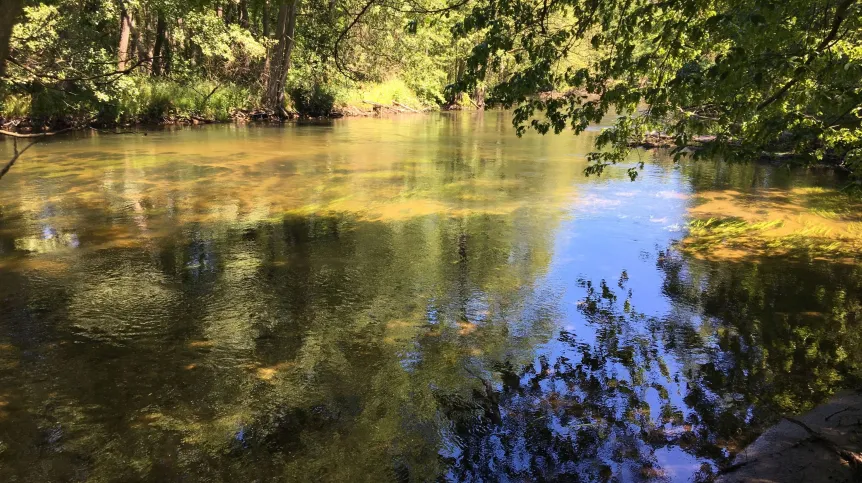
Biologists from the University of Lodz are attempting to determine whether there will soon be a massive invasion of the hybrid crustacean Dikerogammarus villosus in Polish rivers. It threatens fauna because it feeds on fish eggs and displaces local species that live in European waters.
Research led by Dr. Tomasz Rewicz is conducted by scientists from the university’s Department of Invertebrate Zoology and Hydrobiology, Faculty of Biology and Environmental Protection.
The selected research model is Dikerogammarus villosus, a predatory crustacean from the Ponto-Caspian region. Genetically distinct populations from the Danube and the Dnieper have already successfully colonized the Oder and the Vistula in Poland.
Dikerogammarus villosus came to Poland from two directions (east and west), and at this stage of research it is already known that representatives of both groups are genetically slightly different from each other. According to the scientists, when the representatives of both populations interbreed, a super-hybrid will be created, whose individuals may be even better adapted to the environment, and thus, they will threaten the native fauna even more. Representatives of the western line live in the Oder, and the eastern line - in the Vistula. According to biologists, the meeting of the two groups is almost certain.
Dr. Rewicz said: “The two rivers are connected by the Brda, the Bydgoszcz Canal, the Noteć and the Warta. Of course, we monitor this area very carefully. Fortunately, there is not much sailing traffic in this section and there are no habitats particularly favoured by this species, so the populations have not met yet.”
The researchers are checking whether the genetically different populations of this species originating from different, isolated native regions, have different invasive potentials, and whether a contact between previously isolated populations will lead to their cross-breeding and the creation of a super-hybrid with even higher invasive potential.
The project is very important on a global scale. The current stage of Dikerogammarus villosus invasion in Poland is a unique opportunity to monitor the likely contact of these two fronts and intra-species hybridisation. The choice of Dikerogammarus villosus as the model organism is critical because the eastern and western populations were genetically distinct and probably had different environmental optima.
Dr. Rewicz said: “Hybridisation can lead to the creation of a super-hybrid with even greater invasive potential and result in a future +re-invasion+. The situation we observe in the dynamics of the invasion and the distribution of this species in Poland is a great opportunity to experimentally test this hypothesis.”
The team of scientists made three hypotheses. One of them concerns the reproductive success and condition of the offspring. The most important question is whether the progeny obtained from crossing populations from two fronts have a higher invasive potential than the progeny obtained within the population.
Rewicz continued: “Despite the genetic distinctness of the population, a reproductive barrier is unlikely. We will check whether the reproductive success of individuals between and within the fronts is comparable. If the populations from the eastern and western fronts come into contact, hybridisation will occur. This can potentially result in the creation of a super-hybrid: individuals with higher invasive potential due to increased genetic diversity, and probably wider ranges of tolerance to environmental conditions.”
The research results will also draw attention to the issue of species invasion and the impact of - often unconscious - human activities on changes in the ecosystem.
Rewicz said: “We have known for several weeks that another area has appeared where eastern and western amphipod populations may meet. Since 2015, representatives of the eastern line have been colonizing the Baltic countries, and in March the species was found in Lake Vättern in Sweden. It is suspected that the species was introduced to Sweden along with yachts that previously sailed the alpine lakes.”
He added that Sweden is an area where both populations may also soon meet and interbreed. These observations also show how humans unwittingly contribute to the spread of invasive species.
He said: “This is not just about Dikerogammarus villosus, but also many other aquatic species including mussels and plants. The UK, US and Canada have already introduced safety procedures for water sports. Boats should only be launched in designated areas and before changing woter bodies they should be cleaned and dried, and the ropes and buoys should be thoroughly disinfected. In those countries, the awareness of the dangers of species invasions is much higher than in Poland. I hope that our research will draw attention to these threats.” (PAP)
PAP - Science in Poland, Bartłomiej Pawlak
bap/ agt/ kap/
tr. RL













